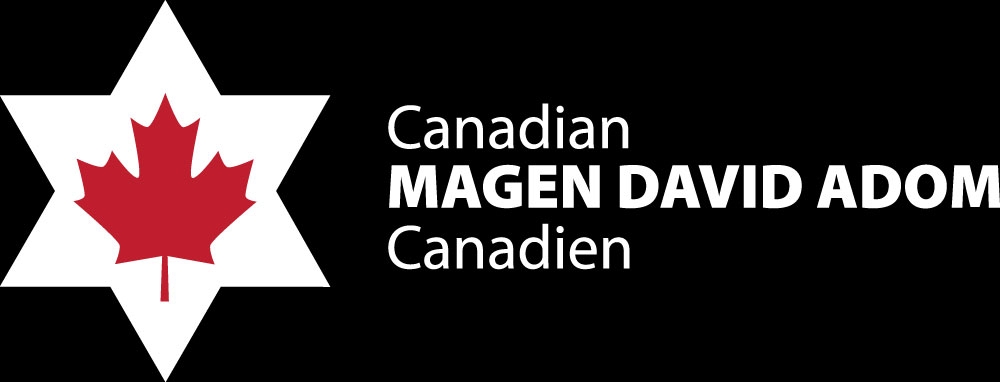|
|
Hanukah and the Story of Yosef
Every year, without exception, the story of Yosef and his brothers is read during or just before the celebration of Hanukah. It is always at this time of year that we read about the very first instance of Sinat Hinam (baseless hatred) among the Jewish People – the hatred shown to Yosef by his brothers, who ended up selling him into slavery, banishing him from their family. Is this just a coincidence, or might there be some connection between the story of Yosef’s being sold as a slave, and the festive celebration of Hanukah?
In truth, we have proof that a connection exists between the story of Yosef and the story of Hanukah. The Kabbalistic work Megaleh Amukot (by Rav Natan Shapiro, Poland, 1584-1633) noted that the Gematria (numerical value) of the name "Yosef" equals that of the name "Antiochus" – the Greek king who enacted the edicts against the Jews. Moreover, the Midrash writes that the Greeks forced the Jews to write upon the horns of their oxen a formal declaration that they renounced their allegiance to their G-d. Some Rabbis noted that this edict was intentionally associated with Yosef, who is compared to an ox ("Bechor Shoro Hadar Lo" – Debarim 33:17).
The question, then, becomes, what is the point of connection between Yosef and Antiochus; between the story of the cruelty suffered by Yosef at the hands of his brothers, and the story of the cruelty suffered by the Jews at the hands of the Greeks?
The answer is that the Greek persecution came because the Jews of the time repeated the mistake of Sinat Hinam which was first made by Yosef’s brothers. The entire story of Hanukah was all about strife among the Jews and the decision to cure this ill through unity and peace. Indeed, the war against the Greeks was led by the Hashmonaim, a family of Kohanim. The Kohanim, the descendants of Aharon, carried his unique legacy of "Oheb Shalom Ve’rodef Shalom" – living as a "lover" and "pursuer" of peace. They embodied the ideal of peaceful relations among people, and thus it was specifically they who led the campaign to restore peace and harmony in Am Yisrael and thereby put an end to the Greek persecution.
Additionally, the Mishna (Middot 2:3) teaches that when the Greeks stormed the Bet Ha’mikdash, they made thirteen breaches in one of the walls surrounding the structure. Thirteen is the numerical value of the word "Ehad" ("one"), and thus represents Jewish unity, the ideal of Jews working and living harmoniously together as one. The thirteen breaches symbolize the breach in unity that wrought the campaign of oppression launched by the Greeks against the Jews.
For good reason, then, "Antiochus" has the same Gematria as "Yosef." If we repeat the mistake made by the brothers in their mistreatment of Yosef, then we suffer the oppression of Antiochus.
This is why we always read the story of the sale of Yosef around the time of Hanukah – because Hanukah is the time for us to focus our attention on eliminating Sinat Hinam from our midst, to correct the mistake made by Yosef’s brothers, the mistake which, unfortunately, we continue to make even today. We read this story as a somber reminder of the devastating consequences of strife among Jews, and the need to work towards peace and harmony – especially during the time of Hanukah. It is perhaps for this reason, we might add, that people customarily make special parties with relatives, friends and neighbors during the Hanukah holiday. Celebrating together with our fellow Jews in joy and camaraderie is an effective way of strengthening the bonds between us and thereby combating strife and fighting.
Please G-d, we will succeed during the upcoming Hanukah celebration to strengthen our love for all our fellow Jews, eliminate hatred and contention from our homes, from our communities, and from our hearts, and increase the level of peace and unity in our nation, so we will earn the merit of witnessing and experiencing miracles like those which were performed for the Hashmonaim, Amen.
Bonjour / Hello [nickname_else_first_name],
Table of contents
1) Perashat Hashavoua - Rabbi Eli Mansour
2) Halakhat Hashavoua (Halakhot related to day to day life) - Hazzan David Azerad
- Hanukah
3) Holy Jokes!
4) FOR KIDS!
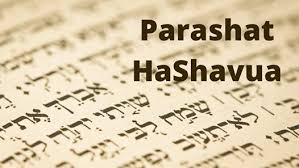
This Week's Parasha Insight with Rabbi Eli Mansour
Hanukah and the Story of Yosef
Every year, without exception, the story of Yosef and his brothers is read during or just before the celebration of Hanukah. It is always at this time of year that we read about the very first instance of Sinat Hinam (baseless hatred) among the Jewish People – the hatred shown to Yosef by his brothers, who ended up selling him into slavery, banishing him from their family. Is this just a coincidence, or might there be some connection between the story of Yosef’s being sold as a slave, and the festive celebration of Hanukah?
In truth, we have proof that a connection exists between the story of Yosef and the story of Hanukah. The Kabbalistic work Megaleh Amukot (by Rav Natan Shapiro, Poland, 1584-1633) noted that the Gematria (numerical value) of the name "Yosef" equals that of the name "Antiochus" – the Greek king who enacted the edicts against the Jews. Moreover, the Midrash writes that the Greeks forced the Jews to write upon the horns of their oxen a formal declaration that they renounced their allegiance to their G-d. Some Rabbis noted that this edict was intentionally associated with Yosef, who is compared to an ox ("Bechor Shoro Hadar Lo" – Debarim 33:17).
The question, then, becomes, what is the point of connection between Yosef and Antiochus; between the story of the cruelty suffered by Yosef at the hands of his brothers, and the story of the cruelty suffered by the Jews at the hands of the Greeks?
The answer is that the Greek persecution came because the Jews of the time repeated the mistake of Sinat Hinam which was first made by Yosef’s brothers. The entire story of Hanukah was all about strife among the Jews and the decision to cure this ill through unity and peace. Indeed, the war against the Greeks was led by the Hashmonaim, a family of Kohanim. The Kohanim, the descendants of Aharon, carried his unique legacy of "Oheb Shalom Ve’rodef Shalom" – living as a "lover" and "pursuer" of peace. They embodied the ideal of peaceful relations among people, and thus it was specifically they who led the campaign to restore peace and harmony in Am Yisrael and thereby put an end to the Greek persecution.
Additionally, the Mishna (Middot 2:3) teaches that when the Greeks stormed the Bet Ha’mikdash, they made thirteen breaches in one of the walls surrounding the structure. Thirteen is the numerical value of the word "Ehad" ("one"), and thus represents Jewish unity, the ideal of Jews working and living harmoniously together as one. The thirteen breaches symbolize the breach in unity that wrought the campaign of oppression launched by the Greeks against the Jews.
For good reason, then, "Antiochus" has the same Gematria as "Yosef." If we repeat the mistake made by the brothers in their mistreatment of Yosef, then we suffer the oppression of Antiochus.
This is why we always read the story of the sale of Yosef around the time of Hanukah – because Hanukah is the time for us to focus our attention on eliminating Sinat Hinam from our midst, to correct the mistake made by Yosef’s brothers, the mistake which, unfortunately, we continue to make even today. We read this story as a somber reminder of the devastating consequences of strife among Jews, and the need to work towards peace and harmony – especially during the time of Hanukah. It is perhaps for this reason, we might add, that people customarily make special parties with relatives, friends and neighbors during the Hanukah holiday. Celebrating together with our fellow Jews in joy and camaraderie is an effective way of strengthening the bonds between us and thereby combating strife and fighting.
Please G-d, we will succeed during the upcoming Hanukah celebration to strengthen our love for all our fellow Jews, eliminate hatred and contention from our homes, from our communities, and from our hearts, and increase the level of peace and unity in our nation, so we will earn the merit of witnessing and experiencing miracles like those which were performed for the Hashmonaim, Amen.
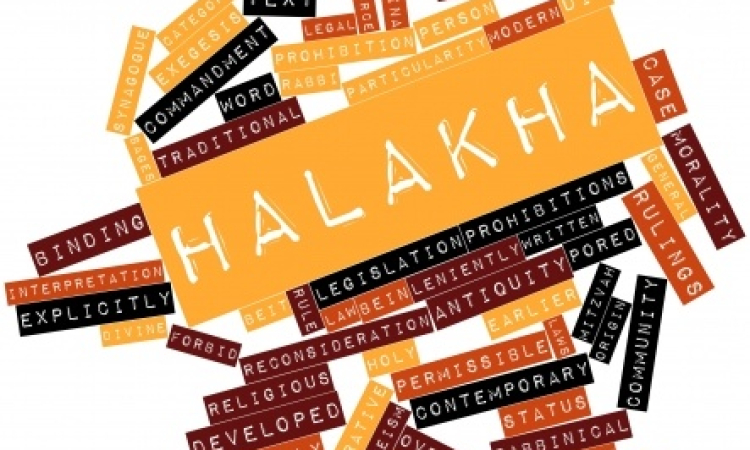
The Laws of Chanukah Mordechai Becher Ohr Sameach (edited and added halachot Sefarad David Azerad )
- Chanukah begins on the evening of the 25th of Kislev and continues for eight days.
- For the entire eight days of Chanukah it is forbidden to fast or to eulogize.
- It is permitted to work; however it is customary for women not to work for at least the first half hour of the candles' burning, and some have the custom not to work for the entire time of burning. The types of activities that are forbidden are things like sewing and laundry etc. (Cooking is permitted.)
- There is no obligation to have festive meals; however it is customary to celebrate by eating special meals anyway, because of the fact that the dedication of the Temple and Altar took place during Chanukah.
- It is customary to sing during the meals songs that thank and praise Hashem. To sing and speak about Torah makes the meal into a seudat mitzvah, a meal of religious significance.
- It is customary to eat milk foods because Yehudit, daughter of Yochanan the High Priest, was taken to be defiled by the Greek ruler Holofernes. She fed him cheese (to make him thirsty) and wine (to quench his thirst); and after getting him drunk she killed him. This was one of the events that sparked the Maccabean uprising. Food fried in oil is also eaten to commemorate the miracle of the Menorah. Latkes and donuts are the most common foods.
- One should not fast during Chanukah, even on the occasion of a parent's yahrzeit (anniversary of death).
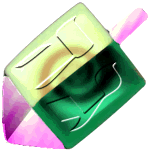
- The festivities of Chanukah should be combined with study of Torah. Although many people have a custom to play card games on Chanukah, the Mishna Berurah states that, "He who cares for his soul should not involve himself in card games."
- It is obligatory to light candles, and one should even borrow money to fulfill this mitzvah. If a poor person needs money for Chanukah candles the community is obligated to provide for him.
- The minimum obligation is that every household should have one candle burning every night. It is customary to be scrupulous regarding this mitzvah: to have one candle on the first night and an additional candle every night (1-8), and for everyone in the house as well.
- Any type of oil is acceptable for use in the menorah, however, it is best to use olive oil.
- The menorah should be similar to the Menorah in the Temple and hence most authorities forbid using electric lights or gas lamps.
- The light should be clear, and the wicks should not flicker
- Wax candles are also acceptable, providing they have a single wick.
- All wicks are acceptable, but it is best to use cotton. The same wicks may be used over and over again.
- It is correct to have a Menorah of glass or metal if one is lighting with oil, since other substances such as clay become disgusting after one use. If one can afford it, it is correct to buy a beautiful Menorah.
- If one is using candles a Menorah is not necessary.
- If a number of people are lighting in one household they should make a slight separation between their menorahs so that there is no confusion to the observer as to the number of candles.
- Ideally, the Menorah should be placed outside the house to the left of the entrance. Since anti-Semitism was so common throughout Jewish history it became customary among many communities to place the Menorah inside the house, near the entrance or on the table. In many families it is the custom to place the menorah in a window facing the public, especially where many people share one entrance (e.g., apartment building). In Israel it is customary to light outside in a special box that prevents the flames from blowing out.
- In most Yeshivot and Seminaries, it is customary for students to place their menorahs in the dining room at windows facing the street or public thoroughfare. (Lighting in the dormitories is usually a fire hazard and should therefore be avoided)
- The menorah should be no lower than three tefachim from the floor (approx. 10.5 inches or 27cm) and should be no higher than 20 amot from ground level (35.5 ft or 10.8 m). Ideally, it should be about 10 tefachim high (35 inches or 90 cm).
- The Menorah should have all the candles or wicks on the same level, none higher or lower than the others.
- It is customary to have an additional candle (the shamash) with which to light the other candles and in order to use its light. The shamash should be placed in a way that shows that it is not one of the Chanukah candles.
- It is forbidden to derive benefit from the light of the Menorah just as it was forbidden to derive benefit from the Menorah in the Temple, and also in order to show that its purpose of the Menorah is for a Mitzvah, not just for illumination.
- It is preferable to have the candles in a straight line, and not in a semi-circle, however it is permitted to have them in a semi-circle providing each candle is clearly separated from the others.
- It is prohibited to light the shamash from the Chanukah candles.
- Leftover wicks and oils after Chanukah (except for unused oil left in the bottle) may not be used for anything else. One should not store the used wicks and oil for the next year, since there is a probability that it will be used for profane purposes by accident.
- There are different customs as to the lighting of the Menorah. Some light at sunset. Some light about ten minutes after sunset and some light 1/2 hour after. Some specifically light after the evening service is recited (Maariv). Ideally a person should follow the custom of his father. If this is not known or is inapplicable for any reason, one should follow the custom of the local community.
- It is obligatory to put in enough oil, or a long enough candle to burn for at least 1/2 hour after nightfall (i.e. the appearance of three medium size stars).
- In exceptional circumstances one may light one and a quarter hours before sunset with a blessing. (However one should be careful to put in more oil or to use longer candles). If possible it is better to appoint an agent to light candles at the correct time, than to light early. .
- If one forgot or was not able to light at the correct time, one may light as long as people are still awake in the house in which one is lighting.Some are of the opinion that you should light anyway and don't miss the opportunity of the Mitzvah .
- One should prepare the wicks and candles etc. before Maariv ,if possible (if you light after) or well before the time of lighting in order to light the Menorah at the correct time.
- It is best to light in the presence of many people in order to publicise the miracle.
- On the first night three brachot, blessings are recited. "Lehadlik ner Chanukah" Sefaradim do not say SHEL, "She asa nissim" and "Shehecheyanu". .
- On the other nights only the first two blessings are said.
- All the blessings should be recited before actually lighting the candles. First light the Shamash before the blessings to avoid delay. It is forbidden to speak between the recitation of the blessings and the completion of candle lighting.
- "Hanerot Halalu" is recited either during or after the lighting of the additional candles followed by Psalms 30 "Mizmor Shir Chanukat Habayit L'David.....".
- "Maoz tsur yeshuaty" then sung.
- Place the first candle on the extreme right of the Menorah. On the second night add a candle on the left. Light the newest candle first and proceed to the right.
- There are different customs regarding the placement of the candles, some follow the right and left of the observer from outside, some follow the right and left of the person lighting inside (Sefaradim observe this custom).
- Do not remove the Shamash from the wick until the flame catches on most of the wick.
- One does not add candles if they forgot to light on any night..
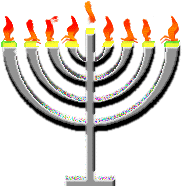
- The Menorah should not be moved after it has been lit.
- If the Menorah was lit in accordance with the requirements of Jewish law and it was extinguished, one is not obligated to relight it, but one may relight it without reciting a blessing.
- If the Menorah was not lit properly in the first place, or was lit in a windy place and blew out then one is obligated to relight if it went out within 1/2 hour after nightfall.
- On Friday afternoon, the Chanukah candles should be lit before the Shabbat candle-lighting time (if one accepted Shabbat early, it is forbidden to light Chanukah candles). Mincha should be said before lighting, if possible.
- Remember to put in more oil or bigger candles on Friday, so that they burn 1/2 hour after nightfall. Try to light just before the Shabbat candles, (without of course delaying the lighting of the Shabbat candles)
- When lighting on Saturday night, at the synagogue one should light Chanukah candles before Havdalah,at home however after Havdalah. One may not use the Menorah as the candle for Havdalah.
- If one is a guest at someone's house (and staying there), one should give the owner a small amount of money to buy a portion in their candles and one may fulfil the obligation through the owner.Some say that guests may light their own Chanukiah(for most ashkenazim).
- If one is eating out then one should light the Menorah at their place of residence.
- During morning prayers, Shacharit, one should recite the full Hallel every day.
- "Al hanissim" the special paragraph of prayers for Chanukah is added in the silent prayers, Shmoneh Esreh and also in Grace after meals(Birkat Hamazon). If one forgot to say this addition, one should not repeat either Shmoneh Esreh or Birkat Hamazon.
- It is customary to light a Menorah in the Synagogue every evening between Mincha and Arvit . It is placed at the southern wall of the Synagogue, in imitation of the Menorah in the Temple in Jerusalem.
Bevirkat Chanukah Sameach and Shabbat Shalom
David Azerad
3) HOLY JoKeS!!
Selection of funny snippets, loosely related to this weeks parashah or current events, to brighten your day
- Which hand is best to light the menorah with? Neither, it’s best to light it with a candle.
- How can you recognize a Hanukkah hippie? He’s the one with his hair in dreidel-locks.
- How much Hanukkah gelt did the skunk get? One cent.
- What’s the best Hanukkah gift for the person who has everything? A burglar alarm.
- What do you call a speck that falls into the latke pan? An unidentified frying object.
- Why don’t we eat clowns at Hanukkah? Because they taste funny.
- What’s the difference between Hanukkah and a dragon? One lasts for eight nights, the other sometimes ate knights.
- What’s the best thing to put into the sufganiyot? Your teeth.
- What did the candles say when the menorah complained about getting too hot? “Whoa, a talking menorah.”
- What did the older Hanukkah candle say to the younger one? “You’re too young to smoke.”
- Why was the broom late to the Hanukkah party? It over-swept.
- Miriam goes to the post office to buy stamps for her holiday cards. She asks the cashier, “May I please have 50 Hanukkah stamps?” The cashier asks, “What denomination?” To which Miriam replies, “Oh vey, has it come to this? OK, give me 6 Orthodox, 12 Conservative, and 32 Reform.”
- Why are there only 8 days of Hanukkah? Because 7 ate 9.
- How many potatoes does it take to make potato pancakes? A latke.
- Why do you put candles on top of the menorah? It’s too hard to put them on the bottom.
- What did the loaf of bread say to the other loaf of bread during Hanukkah? “Happy challah days!”
- Why did the dreidel go to the doctor? It kept getting dizzy spells.
- I asked the waiter if my latkes would be long. He said no, they’ll be round.
- A little latke gave his mom a gift. “Aww,” she responded. “Why are you so sweet?” He replied, “I guess that’s just the way I yam.”
- What did the stamp say to the Hanukkah card? “Stick me and you’ll go places.”
- What’s a dreidel’s favorite song? “You Spin Me Right Round.”
- Who is a dreidel’s favorite musician? Dr. Dreidel!
- What did the little girl call her dreidel? Clay.
- What does Simba say to celebrate every Hanukkah? “Hanukkah matata!”
- A Jewish guy’s mom gives him two sweaters for Hanukkah. So, the next time he visits her, he wears one. As he walks into the house, his mother frowns and furrows her brow, asking, “What — you didn’t like the other one?”
- Why did the boy put his Hanukkah money in the freezer? He wanted cold hard cash.
- What’s green, spins round, and has wheels? A dreidel. I lied about the wheels.
- What do vegetables say to each other on Hanukkah? “Happea Hanukkah!”


4) FOR KIDS
Click on the image to open the youtube video

 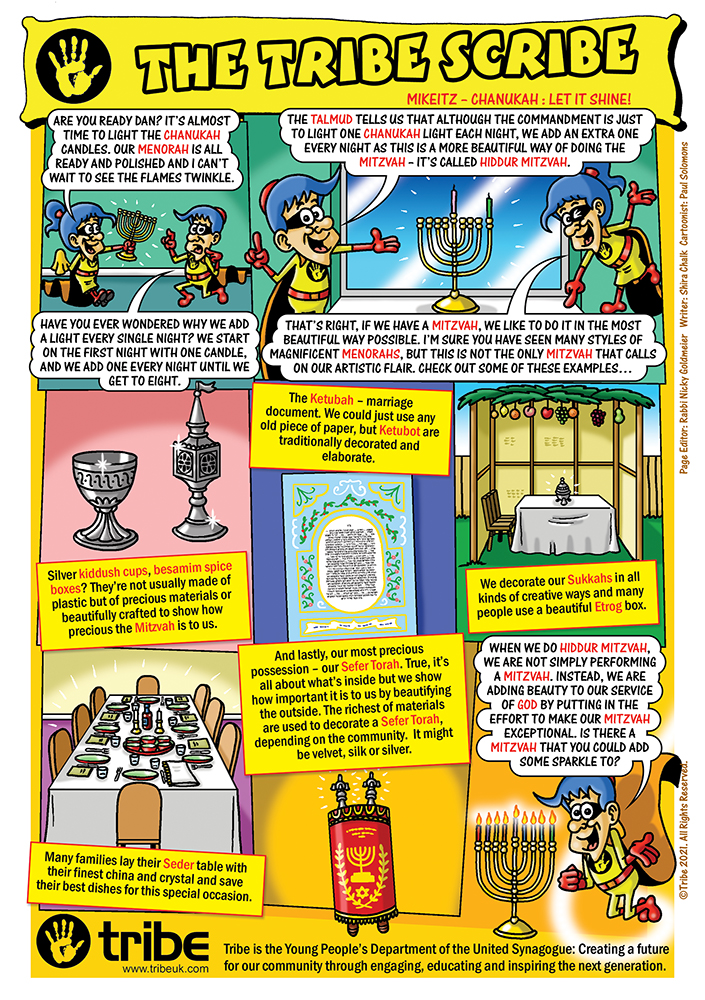
|
|
|
|

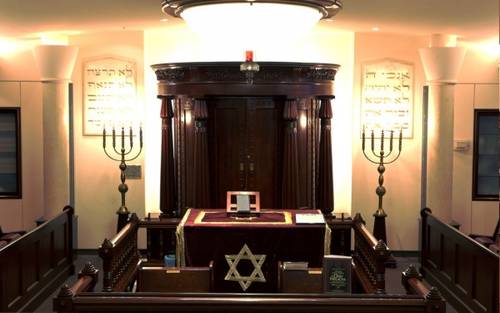
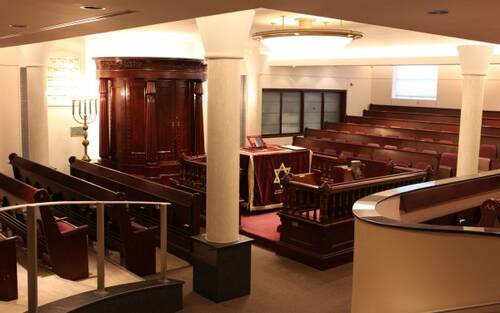
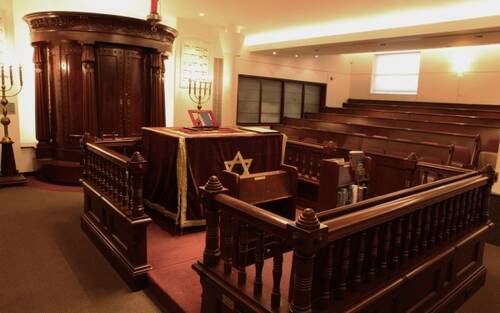

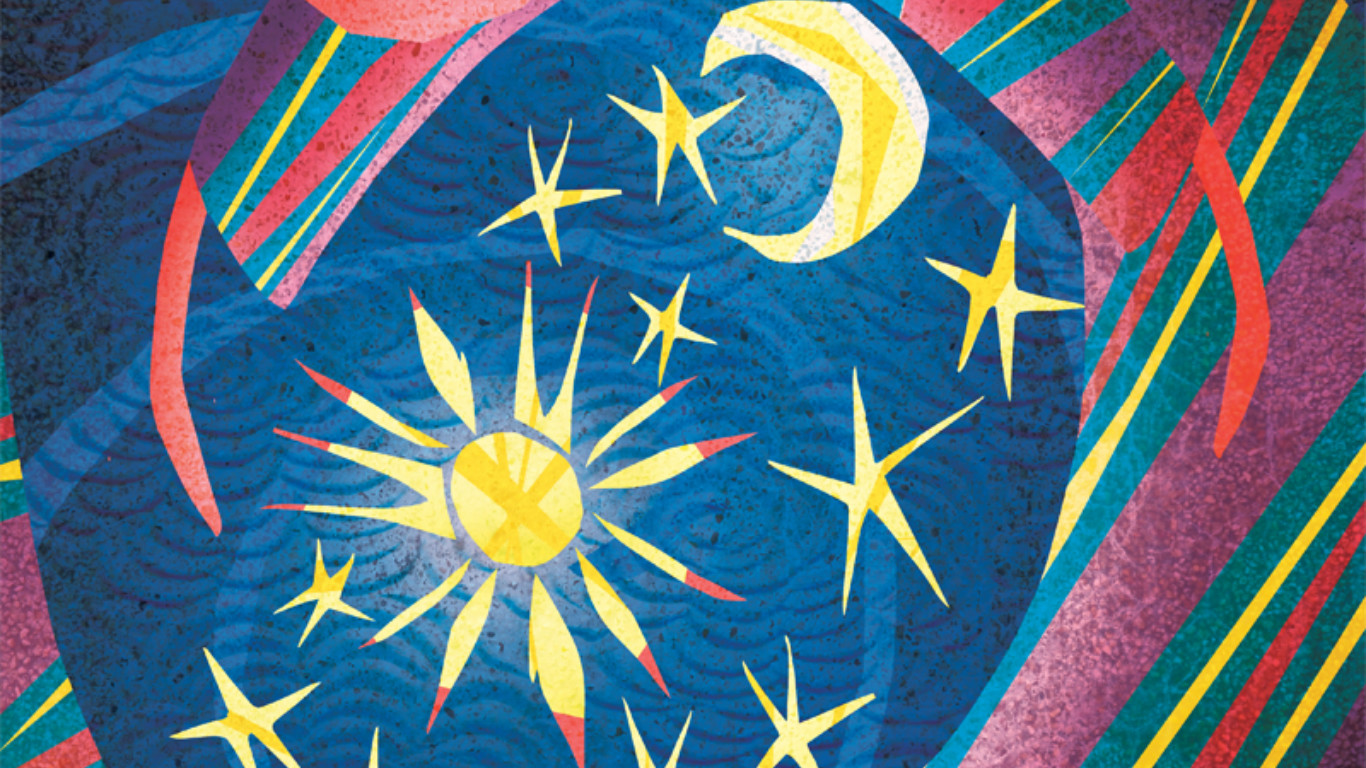
 Maghen Abraham would like to wish you and your family a HAPPY HANNUKAH!
Maghen Abraham would like to wish you and your family a HAPPY HANNUKAH!